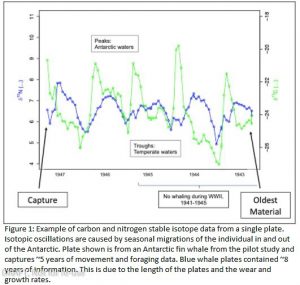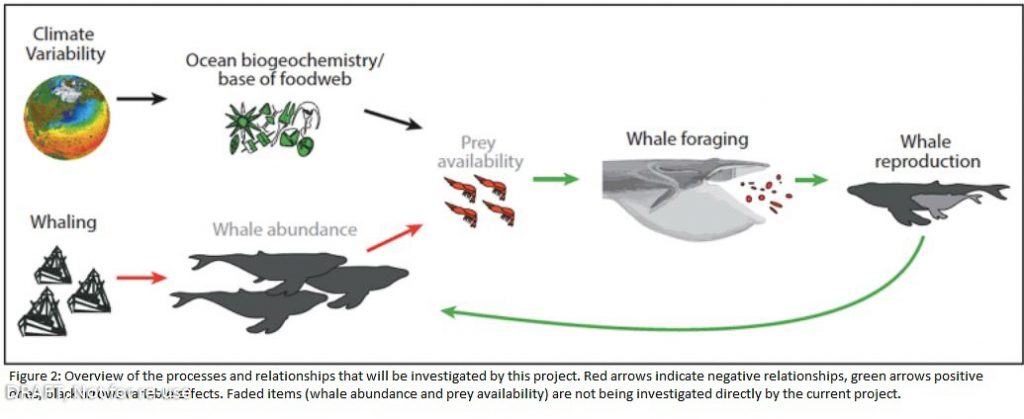A new baseline for Antarctic blue and fin whales:
Using historic baleen samples to study past populations using molecular techniques
Collaborators:
Overview:
Commercial whaling removed nearly two million whales from the Southern Ocean but little data exists from periods before the predators were removed, limiting understanding of past ecosystem function, predator adaptations to the Antarctic, or direct tests of theories such as the Krill Surplus Hypothesis. However, an archive of baleen plates from 800 Antarctic blue and fin whales harvested between 1946 and 1948 was recently rediscovered in the Smithsonians National Museum of Natural History. As baleen grows, it incorporates compounds

from the whales diet and surroundings, recording continuous biological and oceanographic information across multiple years. Applying a suite of modern molecular techniques to these historic specimens, we ask: how did blue and fin whale foraging and reproduction respond to climate variability, changes at the base of the food web, and whaling? These investigations will fill major gaps in our understanding of the largest krill predators, their response to disturbance and environmental change, and the impact that commercial whaling has had on the structure and function of the Antarctic marine ecosystem.
Examination of past conditions and ADAPTATIONS OF POLAR BIOTA is fundamental to predictions of future climate change scenarios. The baleen record forms an ideal experimental platform for studying bottom-up, top-down and anthropogenic impacts on blue and fin whales. Such insights are likely impossible to obtain through any other means as blue and fin whales now number ~1 and 4% of their prewhaling abundances. The baleen archive includes years with strong climate and temperature anomalies allowing the influence of climate variability on predators and the ecosystems that support them to be examined. Additionally, the impact of whaling on whale stress levels will be investigated by comparing years of intensive whaling with the non-whaling years of WWII, both of which are captured in the time series. We will use 1) bulk stable isotopes to examine the trophic dynamics of Antarctic blue and fin whales, 2) compound-specific stable isotope analysis (CSIA-AA) to characterize the biogeochemistry of the base of the Antarctic food web and 3) hormone analyses to examine the population biology of these species. This project will generate a NEW PUBLIC DATA ARCHIVE to foster research opportunities across various components of the OPP program, all free from the logistical constraints of Antarctic fieldwork.
